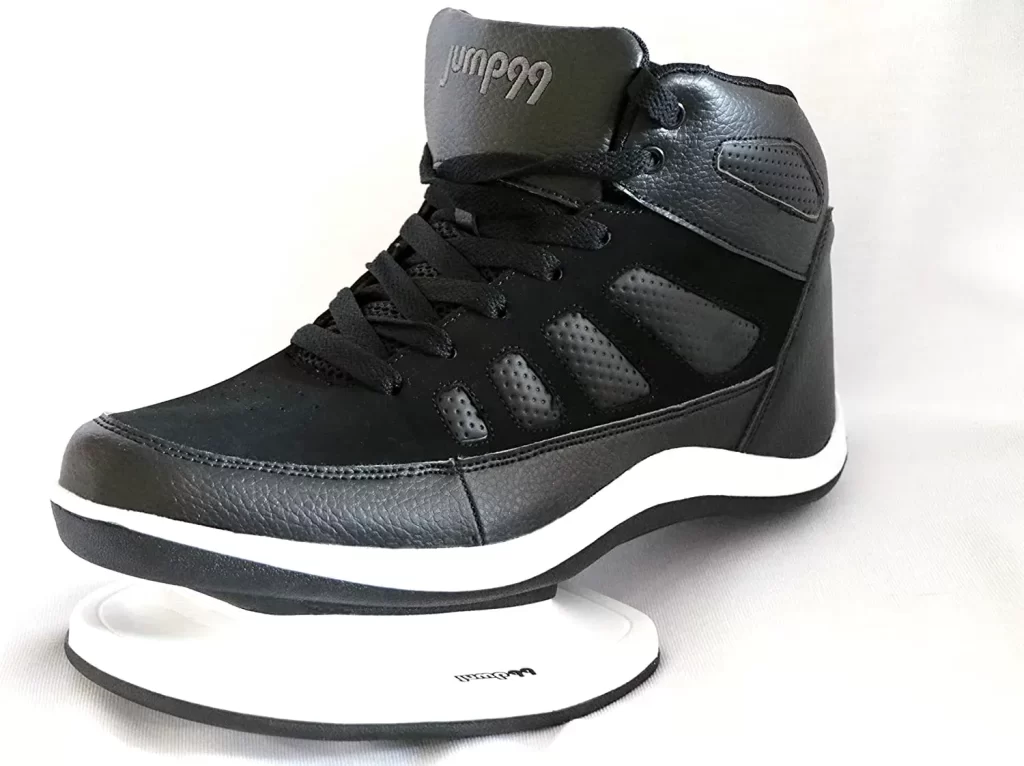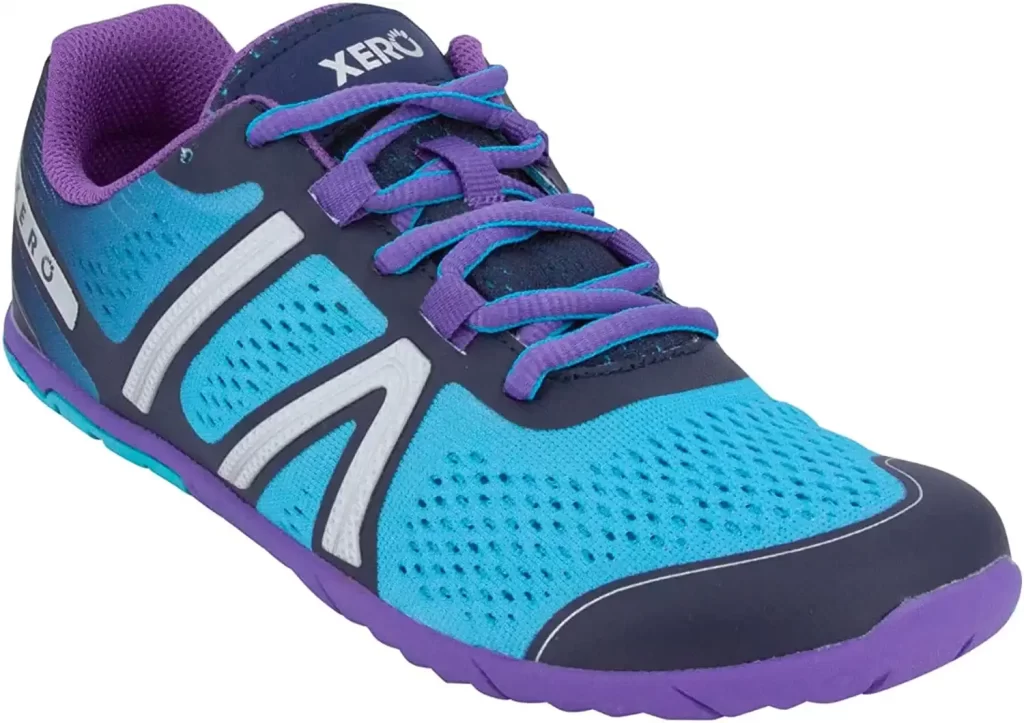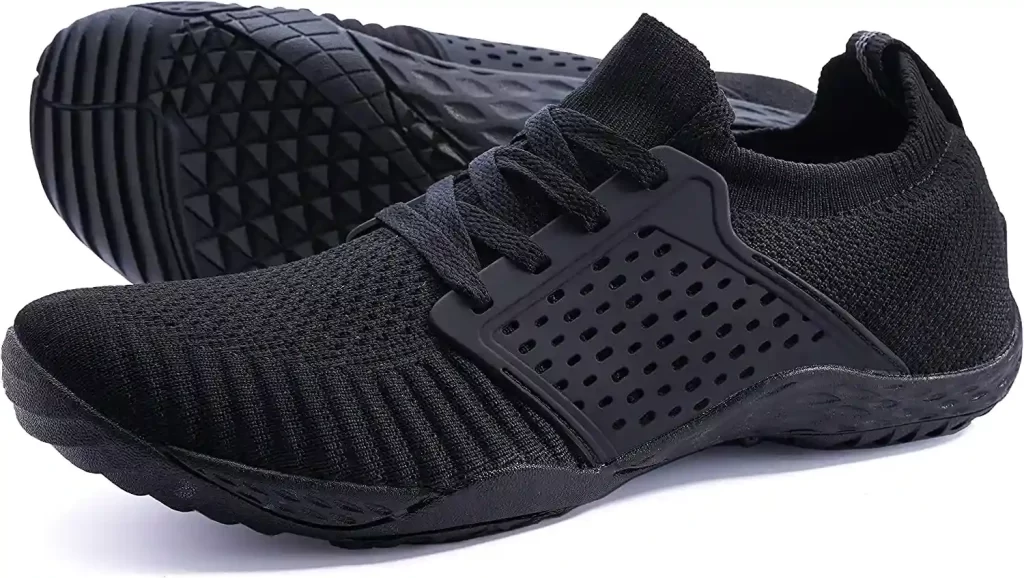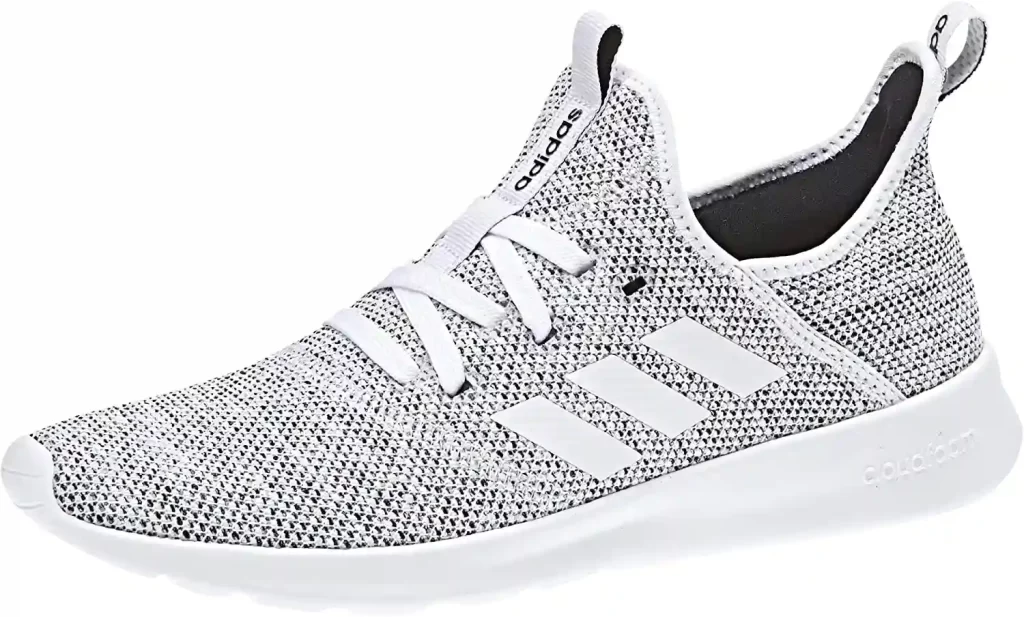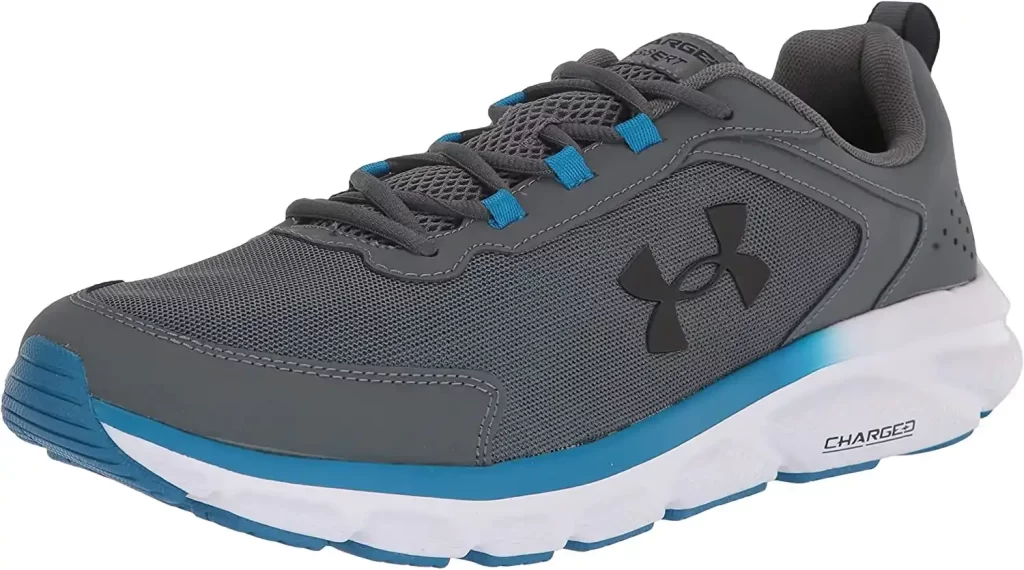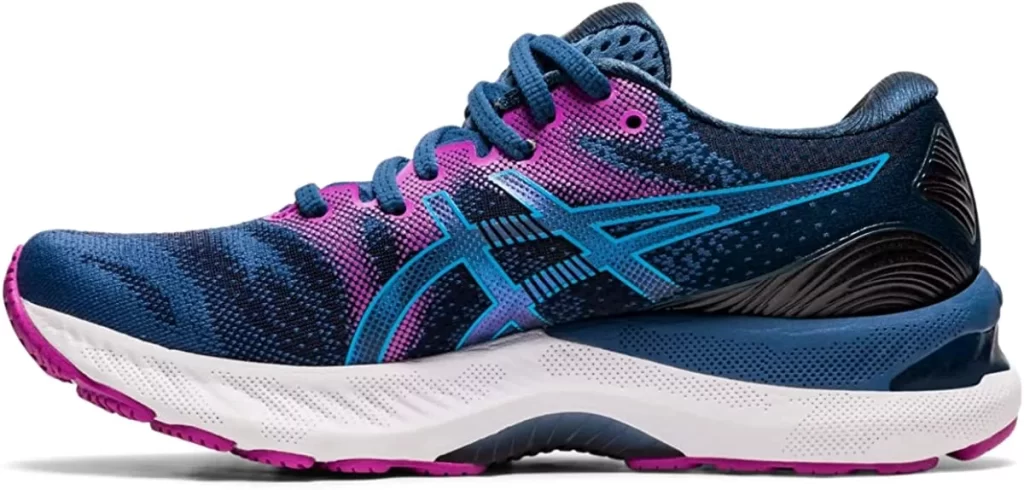
When performing plyometrics exercises, having the proper footwear is essential to maximize results while minimizing injuries.
This guide evaluates some of the top shoes for plyometrics, including the Jump99 Ultra Strength Plyometric Training Shoes, Xero Shoes Women’s HFS Plyometrics Training Shoes, and WHITIN Men’s Cross-Trainer.
Each of these shoes incorporates important design elements like flexible middles, cushioned soles, and extra heel and toe reinforcement, critical features that provide the support and protection needed for the high impacts of plyometric workouts.
Top 7 Best Shoes for Plyometrics Workout and Training:
Here is a list of the 7 best plyometrics workout training shoes for jump training or Plyometrics :
- Jump99 Ultra Strength Plyometric Training Shoes
- Xero Shoes Women’s HFS Plyometrics Training Shoes – Lightweight & Barefoot Feel
- WHITIN Men’s Cross-Trainer | Barefoot & Minimalist Plyometrics Shoe
- ASICS Men’s Gel-Venture 8 Running Shoes
- Adidas Cloudfoam Pure – Comfortable Plyometrics Workout Shoes
- Under Armour Men’s Charged Assert 9 Running Shoe
- ASICS Women’s Gel-Nimbus 23 Running Shoes
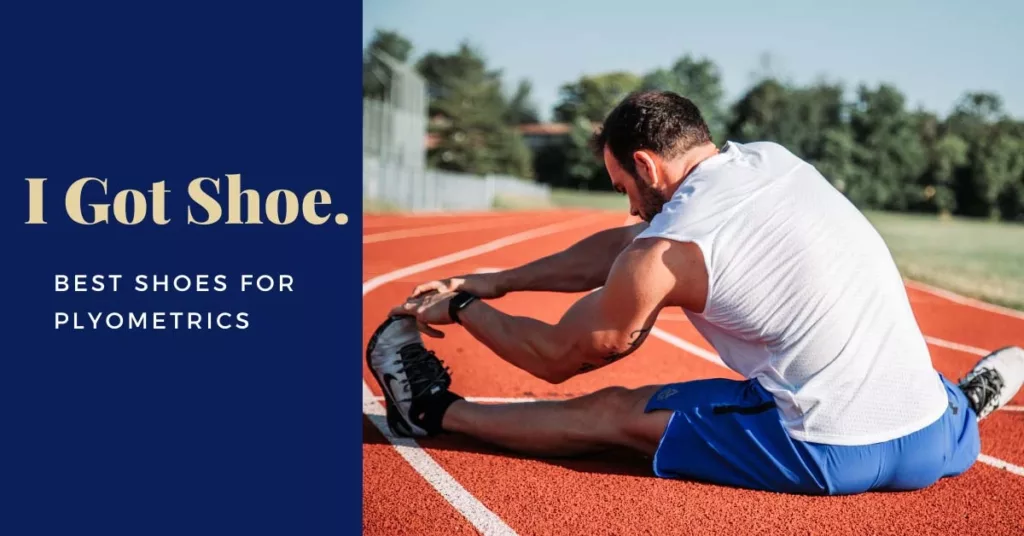
You can check out our guide on the Best Shoes for Plantar Fasciitis.
What Is Plyometrics?
Want to burn fat, build power, and feel amazing?
Plyometric exercises—like long jumps, sprints, and explosive movements—are your secret weapon!
These high-energy workouts strengthen your legs, skyrocket your metabolism, and flood your body with endorphins for a natural mood boost.
Why Plyometrics?
✅ Blast Fat Fast – Supercharge calorie burn with explosive movements.
✅ Build Strength & Speed – Develop powerful, athletic muscles.
✅ Feel Happier Instantly – Endorphins kick in for an energizing high!
Ready to jump, sprint, and unleash your potential?
Add plyometrics to your routine today and feel the difference!
| Feature | Recommended | Not Recommended |
| Fit | Snug but comfortable fit | Loose or tight fit |
| Cushioning | Responsive foam or gel cushioning | Hard or thin cushioning |
| Traction | Rubber sole with patterned tread | Smooth or slippery sole |
| Flexibility | Flexible sole and breathable upper | Stiff or non-breathable upper |
| Weight | Lightweight and minimalist design | Heavy or bulky design |
Can Plyometrics increase speed?
This out this article if you want to know about that.
Plyo Pro Approved: The Best Shoes for Explosive Workouts (Tested & Trusted!)
As a long-time plyometrics enthusiast, I know one thing for sure: the right shoes make ALL the difference.
Whether you’re launching into box jumps, powering through burpees, or dominating sprints, your kicks need serious cushioning, stability, and durability to keep up.
After years of testing and research, I’ve handpicked the top-rated shoes for plyometrics that deliver:
🔥 Elite Shock Absorption – Protect joints from high-impact landings
🔥 Locked-In Stability – Prevent slips and rolls during explosive moves
🔥 Long-Lasting Durability – Built to handle your toughest workouts
Stop risking injury with the wrong shoes—upgrade to performance-driven footwear and train harder, jump higher, and move faster with confidence!
1. Jump99 Ultra Strength Plyometric Training Shoes
Want to skyrocket your vertical jump, boost fast-twitch muscles, and gain explosive speed?
After putting them to the test, I can confidently say the Jump99 Ultra Strength Plyometric Shoes deliver serious results for athletes and fitness enthusiasts.
Why These Shoes Are Worth It:
🔥 Vertical Jump Beast – Unique platform design forces explosive power development
🔥 Speed & Agility Boost – Trains fast-twitch muscles for lightning-quick movements
🔥 Built Tough – Durable construction handles intense plyometric sessions
Fair Warning:
⚠️ Sizing Can Be Tricky – Check with manufacturer if between sizes
⚠️ No Manual Included – But countless free tutorials exist online
The Bottom Line? If you’re ready to elevate your plyometric game and see real gains in power and performance, these shoes are a worthy investment.
Just be prepared to work – the results speak for themselves!
Deliver unparalleled CrossFit performance- order today on Amazon.
2. Xero Shoes Women’s HFS Plyometrics Training Shoes – Lightweight & Barefoot Feel
After testing these for weeks, I’m convinced the Xero Shoes HFS are a game-changer for plyometrics – if you love (or want to try) barefoot-style training.
Why They Shine for Plyo Workouts:
🔥 Feather-Light Freedom (Just 6oz!) – No bulky soles weighing you down
🔥 Zero-Drop, Wide Toe Box – Lets your feet move naturally for better balance & power
🔥 Just Enough Protection – 5mm sole cushions landings without losing ground feel
🔥 Grippy as Hell – Trail-inspired tread sticks to gym floors & turf
Who Might Hesitate:
⚠️ Not for Cushion Lovers – Minimalist design means you feel every impact
⚠️ Break-In Period – Takes 2-3 sessions to adapt if new to barefoot shoes
Real Talk: These aren’t your average trainers.
The HFS forces you to engage muscles differently – which I found improved my jump form and ankle strength over time.
For HIIT, box jumps, or agility drills, they’re surprisingly capable.
Verdict: 9/10 – A rare minimalist shoe that actually works for plyometrics.
Just know what you’re signing up for!
#BarefootTraining #Plyometrics #MinimalistShoes #NaturalMovement
Pro Tip: Start with shorter sessions if you’re new to barefoot shoes – your calves will thank you!
Perfect gift for someone who wants to stay ahead of the competition
.
3. WHITIN Men’s Cross-Trainer | Barefoot & Minimalist Plyometrics Shoe
f you want barefoot-style performance without the crazy price, the WHITIN Cross-Trainer delivers shockingly good value.
As someone who’s tested multiple minimalist shoes, I’m impressed by how well these handle plyometrics, agility drills, and weightlifting despite costing a fraction of premium brands.
The zero-drop design and ultra-thin sole force proper landing mechanics, while the wide toe box lets your feet move naturally for better balance and power transfer.
The grippy outsole works on gym floors, turf, and even light trails.
Just know the minimal cushioning means you feel every impact—great for building foot strength, but tough on concrete.
Size down ½ size for the best fit.
For under $50, these are a no-brainer for functional fitness enthusiasts wanting to try barefoot training.
Best for: Plyometrics, HIIT, functional training, gym work
Skip if: You need arch support or heavy cushioning
Also check: Best shoes for shin splint
Comes in a variety of colors and styles
4. ASICS Men’s Gel-Venture 8 Running Shoes
The Verdict: A surprisingly versatile shoe that bridges the gap between trail pounding and gym performance – especially for lifters and plyometric enthusiasts who want extra stability.
Why They Work for Training:
• Rearfoot GEL Cushioning absorbs shock during jumps/landings without feeling mushy
• Aggressive Trail Outsole grips turf & gym floors equally well (but wipe before deadlifts!)
• Structured Heel Counter locks you in during lateral movements
• More Supportive Than Typical Minimals – Great for those transitioning to flatter shoes
Tradeoffs to Know:
⚠ Heavier (10.4oz) – Not for sprinters seeking featherweight speed
⚠ Moderate Arch Support – May feel restrictive for barefoot purists
Secret Strength: The balanced 8mm drop makes these ideal for hybrid workouts – think box jumps followed by weighted carries.
At under $65, they outclass most cross-trainers in durability.
Best For: Trail-running hybrids, functional fitness, lifters who do occasional plyo
Pass If: You need true barefoot flexibility or compete in Olympic lifts
#HybridTraining #PlyometricShoes #TrailToGym #ASICSPerformance
(Pro Tip: The removable sockliner accommodates custom orthotics!)
Related: Are basketball shoes good for working out?
5. Adidas Cloudfoam Pure – Adidas cross training shoes
The Bottom Line: These Adidas cross-training shoes deliver cloud-like comfort right out of the box, making them ideal for all-day wear and light workouts – but serious athletes might want more support.
Why You’ll Love Them:
☁ Ultra-Soft Cloudfoam Midsole – Like walking on pillows (perfect for high-impact days)
⚡ Breathable Knit Upper – Stretchy, sock-like fit that moves with your foot
👟 Versatile Style – Seamlessly transitions from gym to streetwear
💰 Budget-Friendly – Premium Adidas comfort without the premium price
What to Watch For:
⚠ Not for Heavy Lifting – Lacks stability for serious weight training
⚠ Minimal Arch Support – Best for neutral feet or casual wear
Best For: Casual gym-goers, walking, light cardio, or all-day comfort
Skip If: You need serious support for CrossFit, heavy lifting, or competitive training
Also check: Best shoes for water aerobics
Perfect Pair for any kind of workout.
6. Under Armour Men’s Charged Assert 9 Running Shoe
The Quick Take: These shoes give you serious performance without the premium price tag – perfect for runners, gym sessions, and everyday wear.
What Makes Them Great:
✅ Responsive Cushioning – Charged foam midsole absorbs impact while keeping energy return
✅ Breathable Mesh Upper – Lightweight & airy to keep feet cool during tough workouts
✅ Durable Outsole – Solid rubber tread lasts for miles on roads and treadmills
✅ Trusted Support – Reinforced heel counter locks your foot in place
Who Should Think Twice:
⚠ Not for serious trail running – Best for roads/tracks
⚠ Runs slightly narrow – Consider going half-size up if you have wider feet
Why Buy These?
• Affordable – High-end tech at a budget price
• Versatile – Great for running, gym workouts, or all-day wear
• Dependable – UA’s quality holds up over time
Perfect For: Daily runners, HIIT workouts, cross-training, or casual wear
Not For: Heavy trail use or max-cushioning seekers
7. ASICS Women’s Gel-Nimbus 23 Best sneakers for plyometrics
Want to know more about lifting shoes?
checkout Are Basketball shoes good for lifting?
The Truth: These premium running shoes unexpectedly shine for plyometrics thanks to their next-level cushioning system – but they’re not for everyone.
Why Plyo Lovers Are Raving:
💥 GEL Cushioning X 2 – Forefoot & rearfoot absorption for soft landings
🚀 FF BLAST Midsole – Surprisingly springy rebound for jumps
🔒 Secure Heel Fit – No slipping during lateral movements
🌬 Breathable Mesh – Keeps feet cool during high-intensity bursts
Reality Check:
⚠ Not a true plyo shoe – Best for low-impact plyometrics under 180lbs
⚠ Higher drop (8mm) – Not ideal for pure barefoot-style training
Perfect For:
• Plyo beginners needing extra joint protection
• Runners adding jump training to their routine
• Anyone wanting cloud-like comfort in a performance shoe
Skip If:
• You’re doing advanced box jumps over 24″
• You prefer zero-drop/minimalist shoes
Pro Tip: Use these for interval training – explosive moves followed by short recovery runs!
How to Choose the Best Shoes for Plyometrics & Running
Finding the perfect shoe for plyometrics and running can be tricky—you need explosive support for jumps and responsive cushioning for miles.
Here’s what really matters:
1. Cushioning That Absorbs Impact (But Still Bounces Back)
- Plyometrics: Look for forefoot cushioning (for jump landings) and energy return (for explosive take-offs).
- Running: A balanced midsole (like EVA foam or TPU) keeps runs comfortable without feeling too stiff.
- Best Tech: Nike React, ASICS Gel, Adidas Boost, or Puma Nitro.
2. Stability & Lockdown (No Slipping!)
- A secure heel counter prevents wobbling during lateral jumps.
- A snug midfoot wrap keeps your foot stable on quick direction changes.
- Flat, Wide Base = better balance for box jumps and agility drills.
3. Lightweight & Breathable (No Lead Feet!)
- Heavy shoes slow you down—aim for under 10oz for plyometrics.
- Mesh uppers keep feet cool during high-intensity workouts.
4. Flexible Yet Supportive (Natural Movement, No Restrictions)
- Flex grooves in the forefoot allow natural toe-off when running.
- Moderate arch support (too much can limit explosive power).
5. Durable Outsole (For Gym Floors & Pavement)
- Rubber tread lasts longer than foam-only soles.
- Multi-directional grip prevents slips during plyo drills.
Best Shoe Types for Plyo + Running Combo:
✔ Hybrid Trainers (Nike Metcon, Reebok Nano)
✔ Responsive Running Shoes (ASICS Gel-Nimbus, Brooks Hyperion Tempo)
✔ Barefoot-Style (for advanced users) (Xero Shoes, Vivobarefoot)
Avoid These for Plyometrics:
❌ Max-cushioned shoes (too unstable for jumps)
❌ Minimalist shoes (if you’re new to plyo)
❌ High-drop shoes (can mess with landing mechanics)
Final Tip: Try shoes in-store—jump, sprint, and lunge in them before buying!
Frequently Asked Questions
Should you do plyometrics with shoes?
It is best to do plyometrics without shoes so you can feel the ground and get a better sense of where your feet are.
Can I use running shoes for plyometrics?
Yes, you can use running shoes for plyometrics.
In fact, most athletes use running shoes for plyometric exercises because they are lightweight and provide good cushioning.
However, you may want to consider using a more specialized shoe for plyometrics if you are doing more advanced exercises.
What are plyometric training shoes?
Plyometric shoes are shoes designed to help with plyometric training.
They are typically lightweight and have a low profile to allow for better ground contact.
What is good for plyometrics?
There are various types of plyometrics.
Front box jumps, lateral box jumps, weighted lateral jumps, broad jumps, skater jumps, and scissor jumps all help strengthen the muscles in your legs.
Dot drills are a great way to build strength and coordination because it use both jumping and agility movements.
Lateral box shuffles also work for these abilities as well as challenge your perception of the space around you – try it!
What is wrong with plyometrics?
Plyometrics has a very high risk of injury.
An increased rate of injury from plyometrics is also seen when athletes perform these exercises before an event or before the body is fully warmed up or under conditions that span outside of normal training parameters.
What types of plyometrics exercises are best to use when training?
Skipping, hopping, and jumping are the most common plyometric exercises.
Plyometrics training should be done with a lot of intensity across many sessions to see results.
What happens if you do plyometrics every day?
Muscles can become stronger, more agile, and generally better tuned up for any sort of physical activity.
That’s a workout while you’re working.
Are running shoes good for plyometrics?
Yes, running shoes can be used for plyometrics, but it is recommended to choose shoes that provide good cushioning, support, and stability for the high-impact nature of plyometric exercises.
What surface should you do plyometrics on?
performing plyometric exercises on an aquatic surface or on a sand surface may result in less muscle damage compared to performing them on a firm surface.
Therefore, it is recommended to do plyometrics on a safe and cushioned surface such as sand or in an aquatic setting to reduce the risk of muscle damage and soreness. [1]
Useful Resources:
- “Effects of Plyometric Training on Muscle-Activation Strategies and Performance in Female Athletes” published in the Journal of Athletic Training
- “A Meta-analysis of the Effects of Plyometric Training on Lower Body Power” available in Journal of Strength and Conditioning Research
- The Myths about Plyometrics
- https://www.webmd.com/fitness-exercise/a-z/what-is-plyometrics
- https://www.medicalnewstoday.com/articles/plyometrics
